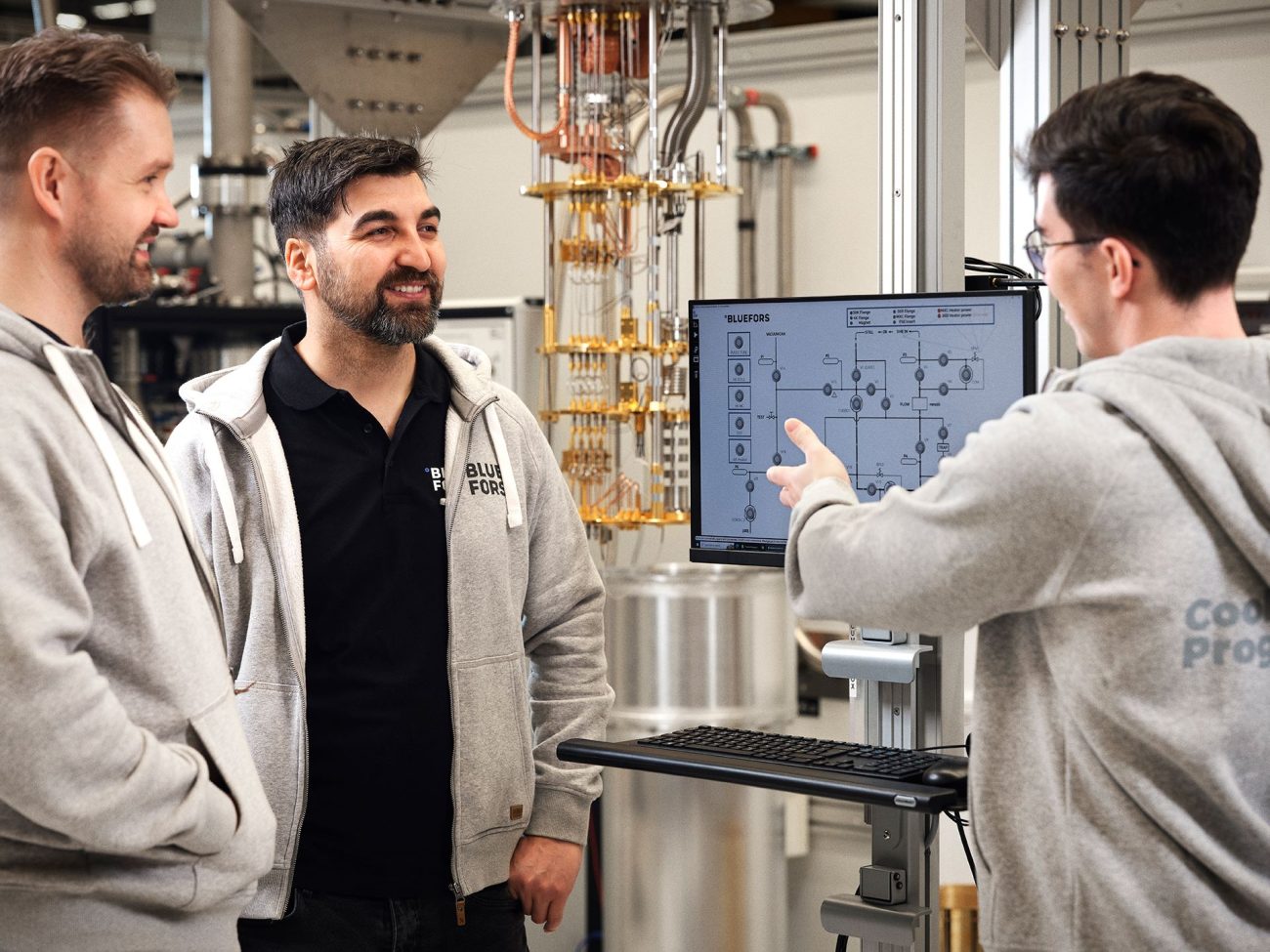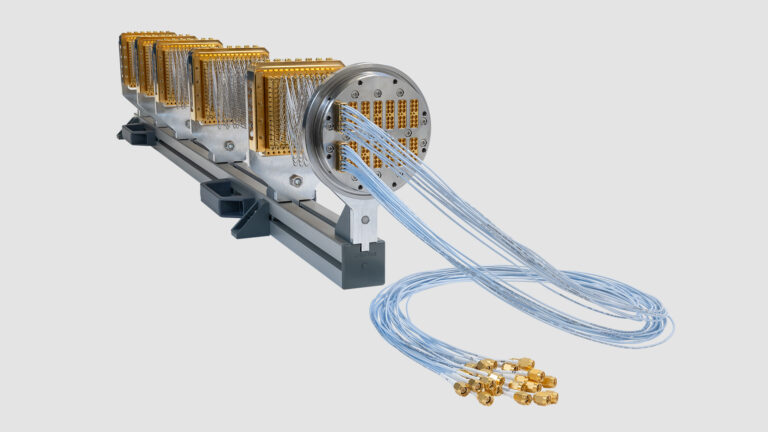Cryogenic experiments require special electrical and thermal properties such as low signal loss, EM shielding, and attenuation. In addition, minimal induced thermal load, proper thermal anchoring, and reliability are crucial qualities for successful experiments.
Our Coaxial Wiring options have been developed to meet these requirements, operating reliably in the cryogenic environment of our systems with repeated thermal cycling.
Great care has been taken to thermally anchor the coaxial assemblies to our systems and at the same time optimize both their electrical and thermal properties. These efforts allow our systems to remain below or close to 10 mK for all practical configurations of our factory-installed wiring.
All our assemblies are manufactured in-house and are fully tested before installation or shipping.



Product Highlights
1.0
Coaxial Wiring
Measurement Infrastructure
Services
Total System Care
Total System Care enables you to focus on your work—carrying out research, operating quantum computers, and driving innovation—now, and over the full lifetime of your system.
Tailored to your specific needs, you’ll benefit from a package with an agreed service level and accompanying set of field services that ensure your systems operate at the best possible performance level.

Semi-Rigid Coaxial Wires for High Frequencies
2.0
Coaxial Wiring
Measurement Infrastructure
Dissipative and Low-Noise Coaxial Wiring
3.0
Coaxial Wiring
Measurement Infrastructure
Thermocoax
4.0
Coaxial Wiring
Measurement Infrastructure
Continuous CuNi-CuNi Coaxial Wire
5.0
Coaxial Wiring
Measurement Infrastructure
Services
Customer Care
We support our customers throughout the lifetime of their system, providing dedicated care to find solutions for any issues. Our technicians and engineers are ready to help you wherever you are located, with prompt service delivered either remotely or on-site.

Related Products
Installation sets
6.0
Coaxial Wiring
Measurement Infrastructure
Technical Requirements
7.0
Coaxial Wiring
Measurement Infrastructure












